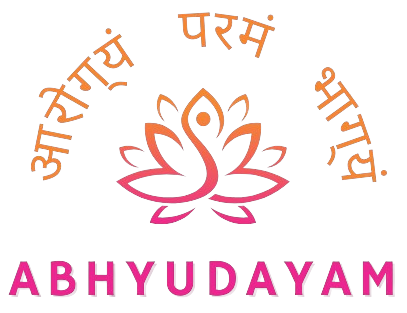व्यायामात् लभते स्वास्थ्यं दीर्घायुष्यं बलं सुखं।
आरोग्यं परमं भाग्यं स्वास्थ्यं सर्वार्थसाधनम्॥
Understanding Nadis and Chakras
Concept of Nadis
Nadis are the subtle energy channels, forming complex web through which life-force energy (prana: responsible for all bodily functions and sustenance), flows through the human body. As per Hatha Yoga as well as Ayurvedic texts, Nadis correspond to our sukshma sharir or subtle body. There are 72k + nadis according to some hatha yogic texts whereas around 350,000 nadis were mentioned in Shiv Samhita. Among all these nadis Ida, Pingala, Sushumna, Brahma, Chitrani, and Vajra Nadis are important; however, the former three holds utmost importance.
The Pingala Nadi represents masculine energy, heating channel, correlated to Lord Sun (Suryanadi) and corresponds to our right nostril. The Ida nadi represents feminine energy, cooling channel, correlated to Goddess Moon (Chandranadi) and corresponds to our left nostril. The Sushumna nadi is activated when both ida and pingla nadi are balanced i.e breath flow through both nostrils is balanced and homeostasis is maintained, then Prana flows upwards through this nadi upto Sahasrara Chakra (Crown Chakra) and then, enlightenment is attained.
Ida, Pingala and Sushumna originate at the base of the spine (Mukta Triveni) and travel upwards. The Sushumna nadi is centrally located and travels along the spinal canal. At the level of the larynx, it divides into an anterior and a posterior portion, both of which terminate in the Brahmarandhra (cavity of Brahma), which corresponds to the ventricular cavities in the brain as per modern science. The ida and pingala nadis also travel upward along the spinal column, but they crisscross each other and with the Sushumna at Ajna Chakra (Yukta Triveni) before terminating in the left and right nostrils, respectively.
Concept of Chakras

Chakras (wheels) are the subtle energy centres which form a swirling mass of energy or Vortex. Each chakra is a conjuction point of many nadis. Overall, it is said that there are 114 chakras in subtle human body ( sukshma sarir) , out of which 112 chakras within the body and 2 chakras outside the body. Among these, only seven are of utmost importance as per yogic science. These seven (7) major chakras are located at points where there is junction of Ida, Pingla and Sushumna nadi along the spinal column. Just as the spokes of a wheel radiate outward from a central hub, so do the other nadis radiate outward from the chakras to other parts of the body. The ancient descriptions of nadis and chakras bear a remarkable resemblance to modern anatomical descriptions of nerves and plexuses, respectively. It is assumed that the currents of prana flowing through these nadis are the subtle counterparts of the nerve impulses.
There are seven principal chakras:
1) Muladhara Chakra (Root Chakra), at the base of the spine (perineum region), at the level of the inferior hypogastric plexus in the physical body.
2) Svadhishthana Chakra (Sacral Chakra) , two fingers above muladhara, at the level of the superior hypogastric plexus in the physical body.
3) Manipura Chakra (Solar Plexus Chakra), above navel region, at the level of the solar (celiac) plexus in the physical body.
4) Anahata Chakra (Heart Chakra), Heart centre, at the level of the cardiac plexus in the physical body.
5) Vishuddhi Chakra (Throat Chakra), Throat, at the level of the pharyngeal plexus in the physical body.
6) Ajna Chakra (Third Eye Chakra), between middle of eye brows, at the level of the nasociliary plexus in the physical body.
7) Sahasrara Chakra (Crown Chakra), just few inches above Brahmarandhra or at the top of the head or Crown.
Sushumna Nadi and Kundalini Awakening
Our physical body is carved around a complex web of the nadis and is sustained by the flow of prana or life-force energy through this subtle powerful network. In average human beings, the dynamic and creative aspect of prana is only an infinitesimal fraction of its total energy, the major part of it remaining in a sleeping potential, or seed state. This latent, stored energy is coined as kundalini, which is symbolically represented as a sleeping serpent, coiled in the root chakra or muladhara, located at the base of the spine.
In an ordinary state, prana flows either through ida or pingala as per swarvijgyan, but not through sushumna. This Sushumna nadi originating from skandasthan, is generally blocked at the base of the spinal column and kundalini is not activated. Through Hatha, a balance between Ida and Pingala is achieved which then activates Sushumna Nadi. If Kundalini is released when the Nadis are weak and blocked, Practioner(Sadhak) will not be able to handle the experience and may collapse. By practising certain series of yogic practices under supervision regularly can aid in Kundalini jagaran.
